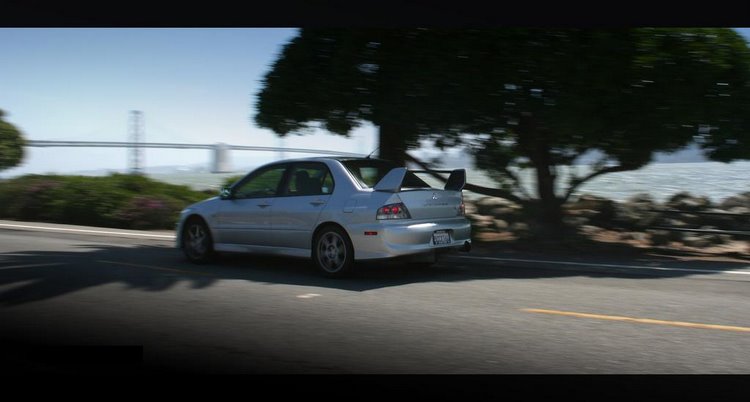The Lancer Evolution is Mitsubishi's flagship sports car. Based only on the unibody of the domesticated Lancer sedan, the Evo is a rally-inspired, turbocharged, all wheel drive automobile. The number designation of the model is most commonly a roman numeral. Evolution models prior to version V were the officially-approved models for Mitsubishi's efforts in the World Rally Championship's Group A class and SCCA Pro Rally Championship. In order to follow these rules, the Evolution is based on the same platform as the Lancer. However, it is much more powerful than the standard Lancer, with the unibody being the only major part in common between the two.
The Evo was originally intended only for Japanese markets but demand on the 'grey import' market led the Evolution series to be offered through limited type-approval in the United Kingdom and in various European markets from around 1998 (Evo V-VI).[citation needed] Mitsubishi decided to export the eighth generation Evolution to the United States in 2003 after witnessing the success Subaru had in that market with their Impreza WRX, a direct competitor in other global regions.[citation needed] The current 2006 Evolution (US market) includes a turbocharged 286 hp (213 kW) inline four-cylinder engine and a full-time all wheel drive powertrain. Variable valve timing is an Evolution first in 2006, coming in the form of MIVEC (Mitsubishi Innovative Valve-timing-and-lift Electronic Control). Japanese-spec cars were limited by a gentleman's agreement to advertise no more than 280 hp (206 kw), a mark already reached by the time of Evo IV; however, each generation of Evo's power has clandestinely evolved above the advertised number, with the Japan-spec Evo IX having real output of about 320 PS, and various versions available in other markets, particularly the UK, have official power outputs up to 405 bhp (302 kW). Even standard components are considered "tuned" compared to other vehicles. For instance, the flywheel on normal cars weighs about 12-15 kilograms but the Lancer flywheel weighs a mere 6 kilos for very quick engine response. The Evo has, however, been evolving into a heavier and heavier vehicle with each generation in face of tougher worldwide safety and emission regulations.
The Lancer Evolution was unique among its competitors in the World Rally Championship in that it is a homologated Group A car slightly modified to be able to race competitively against WRC class cars. They were successful in the WRC Rallies from 1996-1999, thanks to the Finn Tommi Makinen, for clinching the driver's titles from 1996-1999, and the help of teammate Richard Burns for clinching the manufacturer's championship for the first time in 1998. The Evolution however has now been replaced by the Lancer/Carisma GT and the new Lancer WRC04, but the Evo still competes in the Group A and Group N classes.
In some European markets, the Evo was sold as the Mitsubishi Carisma Evolution. Proton Motors of Malaysia raced Evolution III's and an Evolution VII as the Proton Pert in various APRC and APAC rally series.
Mitsubishi Evolution
mitsubishi lancer evo : download this browser for free
Mitsubishi Lancer Evolution
Subscribe to:
Post Comments (Atom)



0 Comments:
Post a Comment